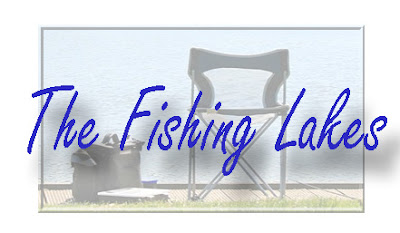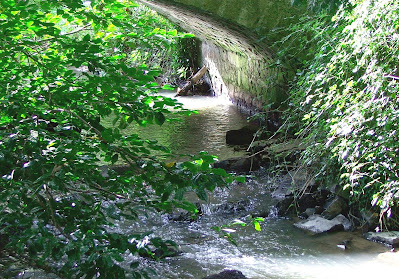Sir John Galvin purchased Corkagh House and Demesne from the Colley family in 1959. But aside from the fact that he was an Australian millionaire who was interested in training horses for equestrian sports and raising specimen cattle not much else had been written about him in any literature pertaining to Corkagh. It was he who had the charming and historic Corkagh House demolished! I was curious about the man and set about investigating further. It turns out that there is plenty of information to be found but a bit of digging through Google is required!
 |
| Treemare Stud now Corkagh Park |
John Galvin was born one of seven children in Tasmania in 1908. His family was of Irish Catholic and Spanish descent and his father worked as an odd job man at a theatre. He received his education from the Christian Brothers. As a teenager his family moved to Sydney and he started work as a messenger boy. The young John was a fast talking opportunist, always looking for a way to make a buck and determined to better himself. After stints at marketing and journalism he moved to Asia to work for an English language newspaper based in China. In Asia Galvin built up a network of contacts in the business and media world. He was one of the few westerners to interview Mao Tse-Tsung! It was because of the contacts and local knowledge that he had acquired in the Far East that at the onset of WW2 he was invited to work with British Special Forces on a secretive anti-Japanese propaganda campaign. |
The arboretum, formerly a show jumping ring
at Treemare Stud |
When the war ended Galvin was in a prime position to capitalize on his contacts in the British Foreign Office and Allied forces. Together with a partner he bought a Malaysian mine which had been owned by the Japanese before the war. The mine had huge reserves, it was only a matter of getting it up and running again, and within a short time they were supplying Japan with the ore it required to rebuild its post-war economy. No one could have predicted how successful the venture would be. Within a decade Galvin was so wealthy he was reported “to have a fortune that equals, if not exceeds, that of J Paul Getty, said to be worth £50 million, and listed as the richest man in America.” (People Magazine – 24/05/61). In the mid 50’s John moved his family to the USA and sold his business interests in Malaysia. He later received a Commonwealth knighthood for his services to Malaya. |
| Corkagh House prior to demolition by John Galvin |
In the USA Galvin invested in vast tracts of land and ranches on the West coast and also in various commercial properties. He entertained lavishly and contributed generously but his money never won him the respect he craved from his upper crust neighbours in the wealthy Woodside area south of San Francisco. John Galvin was smart, but he was a ‘rough diamond’ at least in the opinion of the public school educated British diplomats and ‘old monied’ Americans he dealt with. Galvin had a keen interest in horses and sponsored the United States equestrian teams at the 1960 and 1964 Olympics. He even provided training grounds for them at his ranch south of Los Angeles. His daughter Patricia Galvin was a part of that team, competing in the Dressage event. |
Rear of the farm buildings and stables which
were part of the Treemare complex. |
By the early 60’s US Revenue were pursuing John Galvin for unpaid taxes in the region of $21 million and this led people to wonder exactly how he had created so much wealth. Time Magazine ran an interesting article entitled the ‘The 21 million dollar Mystery Man‘ in 1963. His tax bill was settled for approx $10 million in the mid 1960s’! |
| Farmyard with 2 storey stable buildings behind. |
By this time John Galvin had moved his family to Ireland. He had bought Corkagh in 1959 and by 1963 he had acquired Loughlinstown House in Shankill (this house and lands were subject to a compulsory purchase order and bought by Dublin County Council in 1975); He also owned adjoining townhouses at 63 and 64 Fitzwilliam Square which were also sold in the mid 1970s. It was at his townhouse that he entertained and cemented his place among the cream of Irish society. Galvin was as generous a philanthropist in Ireland as he had been in the USA. He made a very significant contribution to the construction of St Vincent’s Hospital. He also contributed to the arts and so secured himself a position as Trustee at the National Library of Ireland. An online article about the building of St Vincents states: ‘….omits the role of Sir John Galvin. At the time, it was rumoured that the hospital cost £1 million to build and £1 million to stock, and that Mr Galvin, a very generous low-key benefactor, paid for half the cost. He may not appear in the history for reasons of discretion, but his picture, showing him at a prominent place at the opening ceremony, decorated the walls of the hospital near the main door in the ’70s, suggesting such a significant role.‘ |
| The stables were constructed in the early 19th century |
 |
| Oak Avenue, the main entrance to Corkagh (Treemare Stud). |
Galvin bought Corkagh in 1959 and set up Treemare Stud (which included one of the first riding schools in Ireland) under the management of Captain Cyril Harty and his sons. Many successful showjumpers and racehorses were trained here including: Harlequin (ridden by Eddie Harty, Rome Olympics 1966; Highland Wedding, (winner of the Grand National 1969 ridden by Eddie Harty); San Michelle, (Tokyo Olympics 1964 ridden by John Harty). In 1973 A New York Times article reveals that ‘Snowbound and San Lucas, two of the greatest horses ever to compete for the United States Equestrian Team, have been retired and are grazing on the estate of their former owner, Sir John Galvin, outside Dublin.‘ Another article online mentions Corkagh: ‘We retired Snowbound, now 14, after Munich, especially as his rider was scheduled to retire at the end of the year too. He returned to John Galvin’s beautiful farm outside of Dublin and enjoyed a well-earned life of ease until he died.‘Galvin also indulged his interest in cattle breeding at Corkagh and the Charolais and Shorthorns raised here won many prizes at Agricultural shows across Ireland. |
The rich grasslands at Corkagh where horses like
Snowbound and San Lucas spent their retirement. |
Here is an article written regarding Johns generosity to his old ‘alma mater’ which gives a short and interesting account of his life including how he became a local hero at 12 after saving a boy from drowning. The article also mentions how Galvins donations to his school were only made public after his death.Why did John Galvin demolish Corkagh House? There was a rumour that it was to prevent his wife getting the property as part of a divorce settlement! I have searched online and can find nothing to prove this rumour true. There is no record of the Galvin family having lived at the property. It seems that Corkagh was purely business and by 1983 Galvin had sold the estate to Dublin County Council.John Galvin died in 1994 and I can find nothing regarding where he spent his final years. His family were sufficiently well known internationally for a piece about the marriage of his daughter Patricia to appear in the New York Times:
1964/07/05/archives/patricia-galvin-wed-to-french-prince.htmlDUBLIN. With his wife Eileen he had five children including a son Sean who possibly still lives in Ireland. His daughter Patricia (who assumed the title of princess on her marriage to a member of the French aristocracy) may be living in California. There was another daughter Eileen who married a member of the Hungarian nobility and thus took the title of Countess. For more information on the park:
Keep in touch at:
Share photos or get more info on the park at:
















